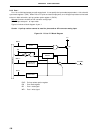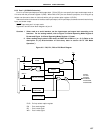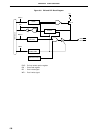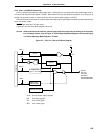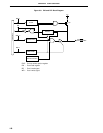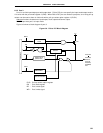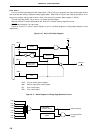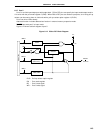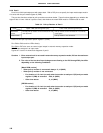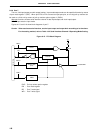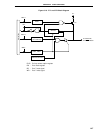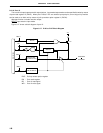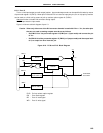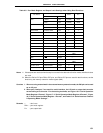
144
CHAPTER 6 PORT FUNCTIONS
6.2.8 Port 6
Port 6 is an 8-bit input/output port with output latch. P60 to P67 pins can specify the input mode/output mode in
1-bit units with the port mode register 6 (PM6).
This port has functions related to pull-up resistors as shown below. These functions depending on whether the
higher 4 bits or lower 4 bits of a port are used, and whether the mask ROM model or PROM model is used.
Table 6-4. Pull-up Resistor of Port 6
Higher 4 Bits (P64 through P67 pins) Lower 4 bits (P60 through P63 pins)
Mask ROM On-chip pull-up resistor can be connected in 4-bit Pull-up resistor can be connected in 1-bit units by
version units by PUO6 mask option
PROM version Pull-up resistor is not connected
PUO6: Bit 6 of pull-up resistor option register L (PUOL)
Pins P60 to P63 can drive LEDs directly.
Pins P64 to P67 also serve as control signal output in external memory expansion mode.
RESET input sets port 6 to input mode.
Figures 6-13 and 6-14 show block diagrams of port 6.
Cautions 1. When external wait is not used in external memory expansion mode, P66 can be used as an
input/output port.
2. The value of the low-level input leakage current flowing to the P60 through P63 pins differ
depending on the following conditions:
[Mask ROM version]
• When pull-up resistor is connected: always –3
µ
A (MAX.)
• When pull-up resistor is not connected
• For duration of 1.5 clock (no wait) when instruction to read port 6 (P6) and port mode
register 6 (PM6) is executed: –200
µ
A (MAX.)
• Other than above: –3
µ
A (MAX.)
[PROM version]
• For duration of 1.5 clock (no wait) when instruction to read port 6 (P6) and port mode
register 6 (PM6) is executed: –200
µ
A (MAX.)
• Other than above: –3
µ
A (MAX.)



